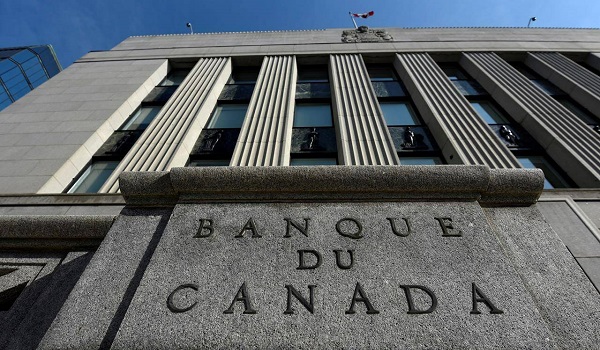Bank of Canada deputy warns aggressive pricing could hinder inflation control
Bank of Canada deputy governor Nicolas Vincent said that companies continue to raise prices more frequently than before the pandemic and warned that this behaviour could become “self-perpetuating,” making it harder to get inflation back under control.
In his first speech since becoming deputy governor, Mr. Vincent described how corporate price-setting changed during and after the COVID-19 pandemic, with companies raising prices more frequently and by larger amounts than usual.
There are signs that pricing behaviour is slowly returning to normal, he told the Montreal Chamber of Commerce. But there’s also a risk that companies will continue pushing cost increases rapidly along to customers.
“If you continue to expect your suppliers and competitors to make frequent price changes, you might be more prone to do the same yourself, creating a feedback loop,” Mr. Vincent said.
“Under certain conditions, this could make prices even more sensitive to shocks. In other words, if recent pricing behaviour settles into a new normal, it could complicate our return to low, stable and predictable inflation.”
The relationship between business pricing decisions and inflation is politically sensitive. The federal NDP has blamed inflation on corporate price-gouging and growing profits, which it calls “greedflation.” The Liberal government has leaned into this argument in recent weeks, demanding that large grocery chains come up with a plan to bring down food prices or face an unspecified tax penalty.
Mr. Vincent, who is an external member of the Bank of Canada’s governing council, cited recent central bank research suggesting that the burst of inflation in 2021 and 2022 was not driven by a growth in profit margins. Rapid price increases have “closely mirrored” rising business costs, related to inputs such as labour, transportation and commodities, he said.
That said, companies have been unusually quick to pass these cost increases along to customers, rather than absorb them. “Even if profit margins haven’t increased, consumers have been left to bear the full brunt of higher prices,” he said.
The Bank of Canada has put increasing emphasis on corporate behaviour as a key to getting inflation back down to 2 per cent, from the current rate of 4 per cent. It held its benchmark interest rate steady at 5 per cent in September, but warned that it could raise interest rates again if several conditions were not met – one of which was a return to more normal business pricing behaviour.
“We will be providing another update on October 25, but it is clear that we are not out of the woods yet,” Mr. Vincent said of the upcoming rate decision, later this month. “We need to acknowledge that an unusual amount of uncertainty continues to cloud our view. And we remain concerned about the persistence of underlying inflation.”
The change in price-setting during the pandemic caught central bankers off guard. Economists rely on models to predict inflation, and the Bank of Canada’s models assume prices are relatively “sticky” – that is, companies change them infrequently because of competitive pressures and because it costs money to change prices.
This core assumption was challenged during the pandemic and the re-opening of the economy that followed. Health-related shutdowns fractured supply chains and changed consumer spending habits, while government support measures juiced demand throughout the economy. Russia’s invasion of Ukraine added inflationary pressures by pushing up oil and other commodity prices. This confluence of events led to sharply rising business costs and a higher willingness to pay by consumers.
“During the recovery from the pandemic, firms started to mention that they were experiencing a rapid increase in their costs as well as high demand for their products and services. Meanwhile, customers had few choices because supply was low across several industries,” Mr. Vincent said.
“This may explain why firms told us that their customers, aware of the widespread cost pressures firms were facing, appeared willing to pay higher prices. Confronted with these changes in their business environment, firms reacted by raising prices more often than usual and by larger amounts.”
Evidence from other countries, as well as from the Bank of Canada’s own business surveys, suggests that companies are becoming less able to pass cost increases along to customers. That could be due to falling demand for goods and services – something central banks are trying to engineer by raising interest rates – as well as increasing competitive pressures.
Still, Mr. Vincent said that central bankers need to keep their eye on structural changes in the economy that might mean firms “continue to make larger and more frequent price changes even when many of the factors driving those changes have gone away.”
“This could be due to permanent shifts in pricing strategies driven by technology or industrial structure. For example, the electronic price tags that you’ve seen in some supermarkets reduce the costs of frequent price changes. And consolidation in some industries may reduce the competitive pressures that restrain price increases,” he said.
This article was reported by The Globe and Mail
















